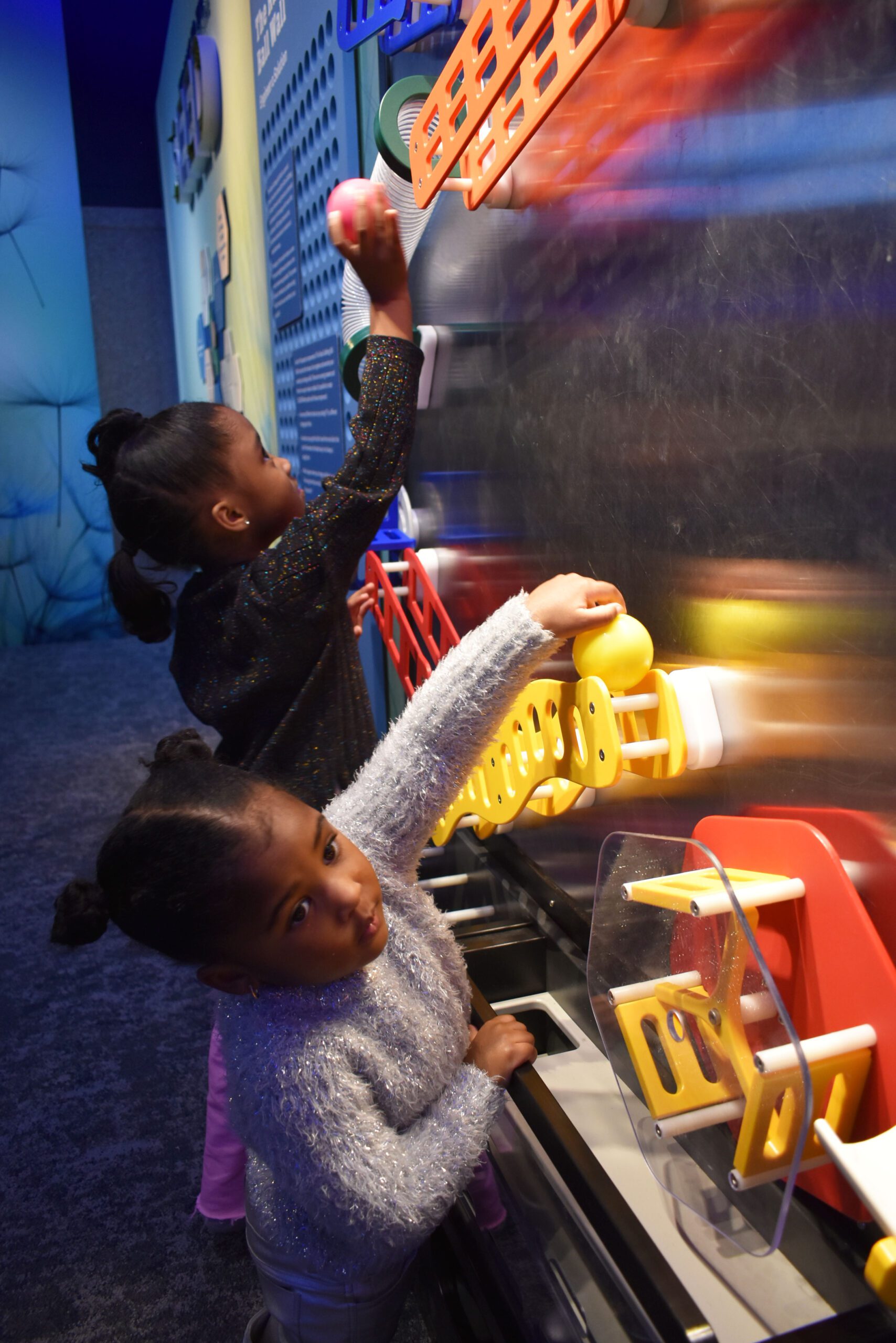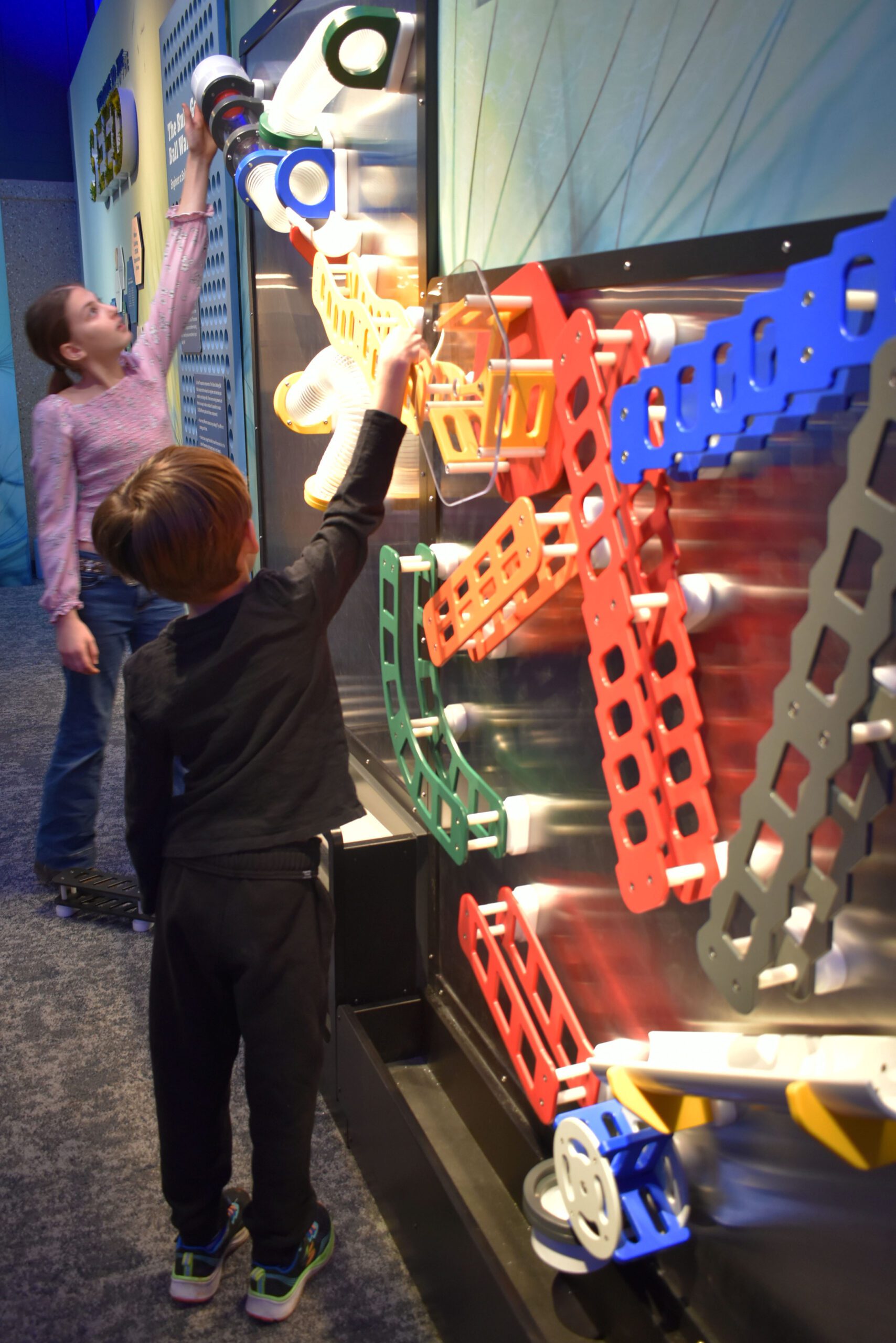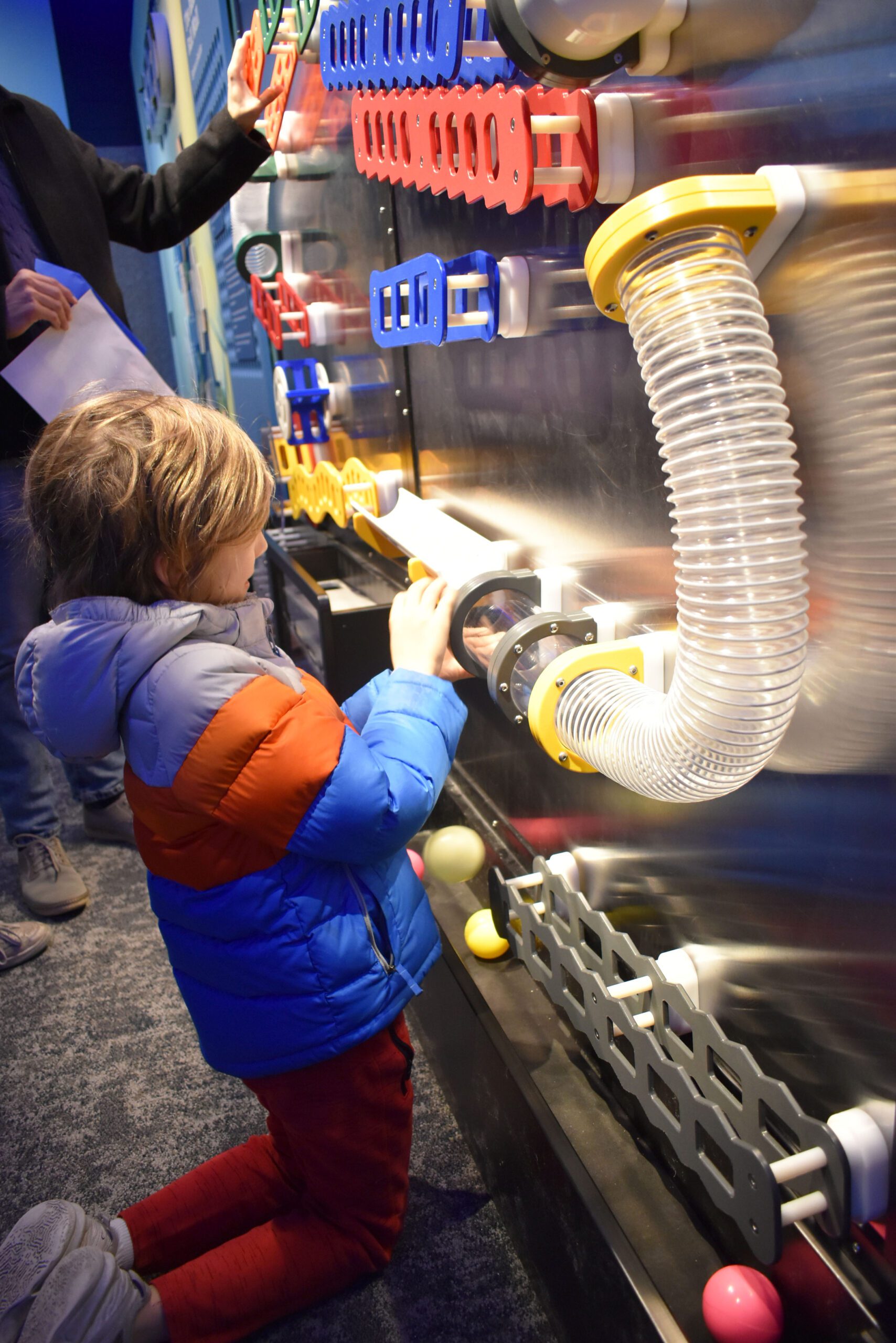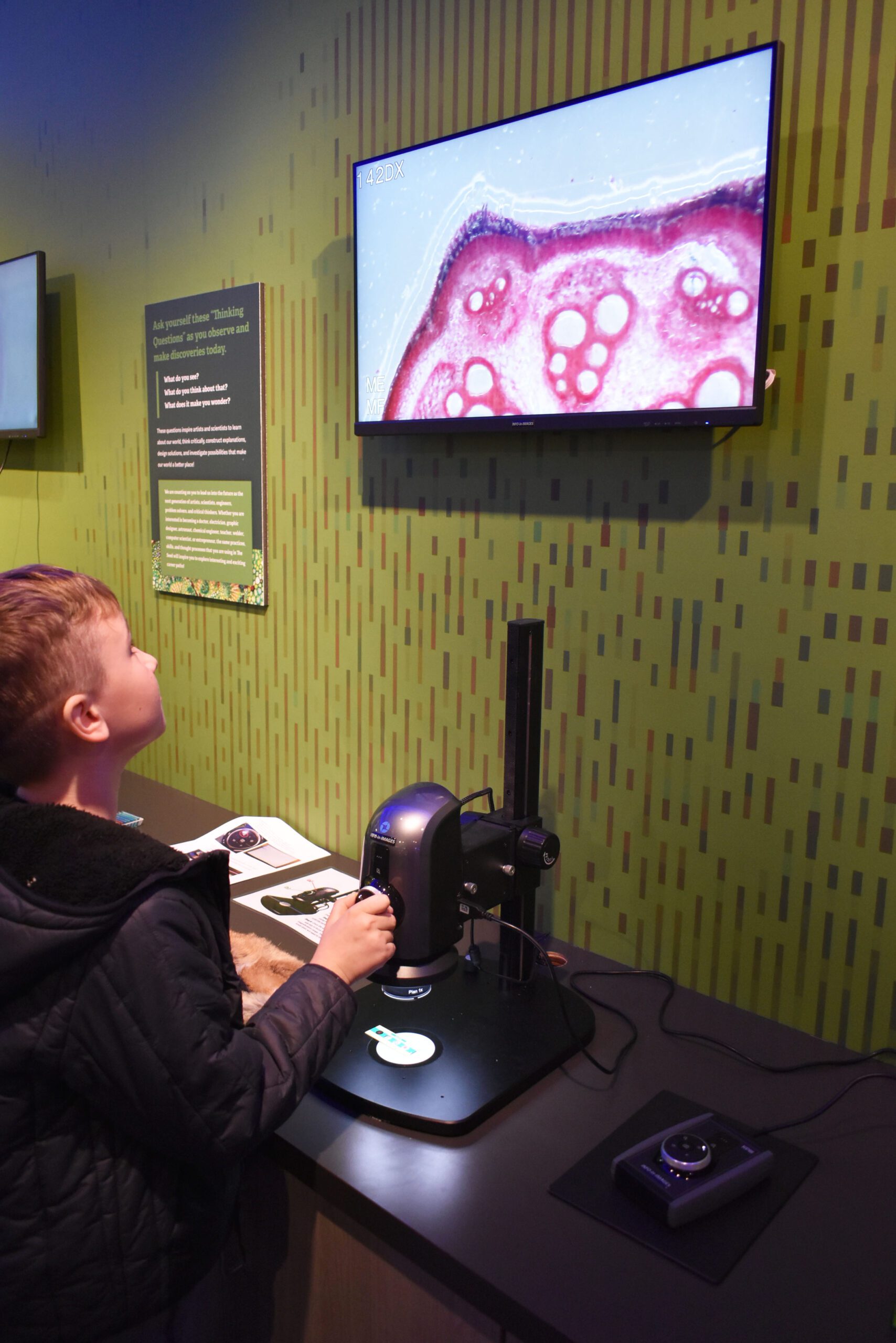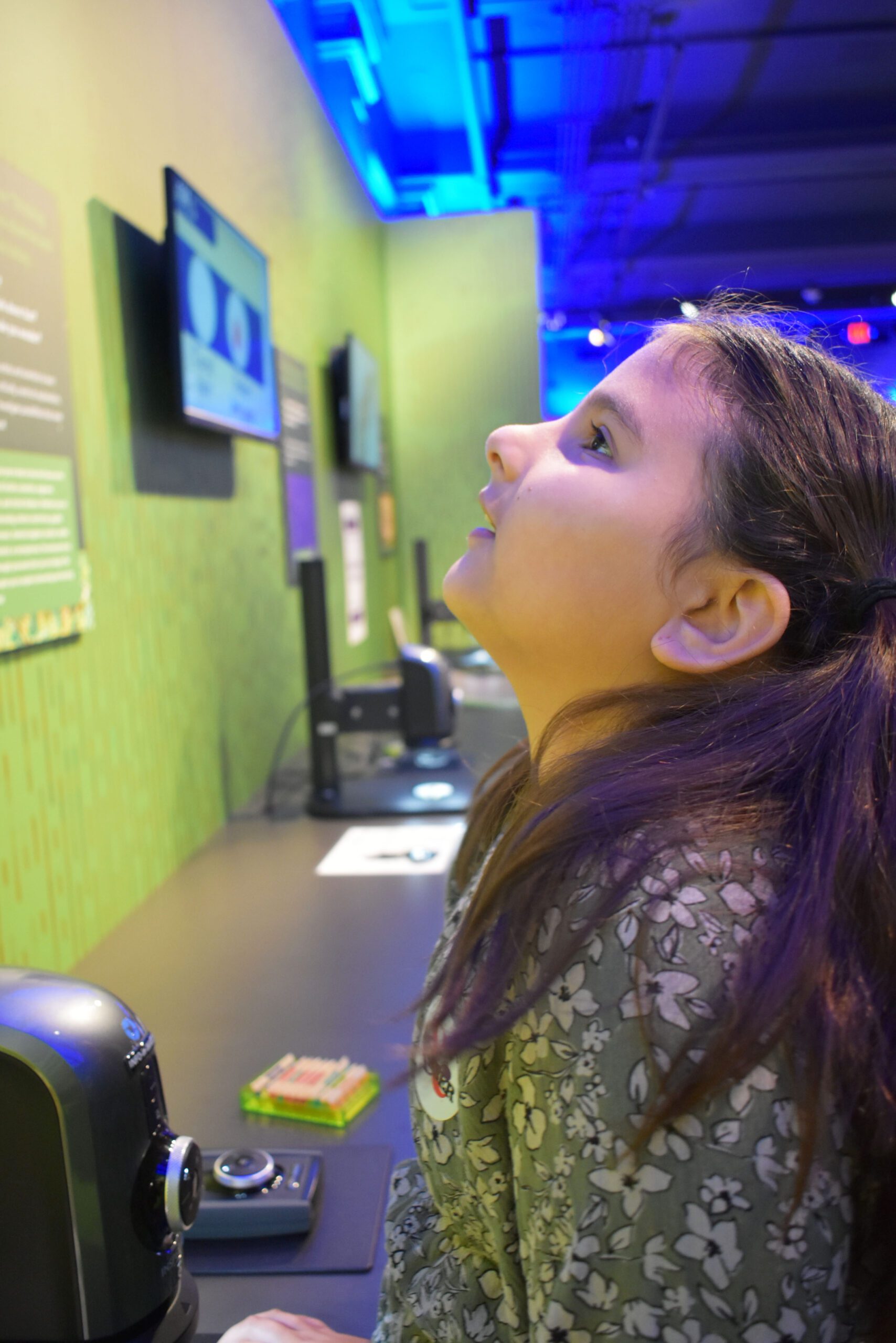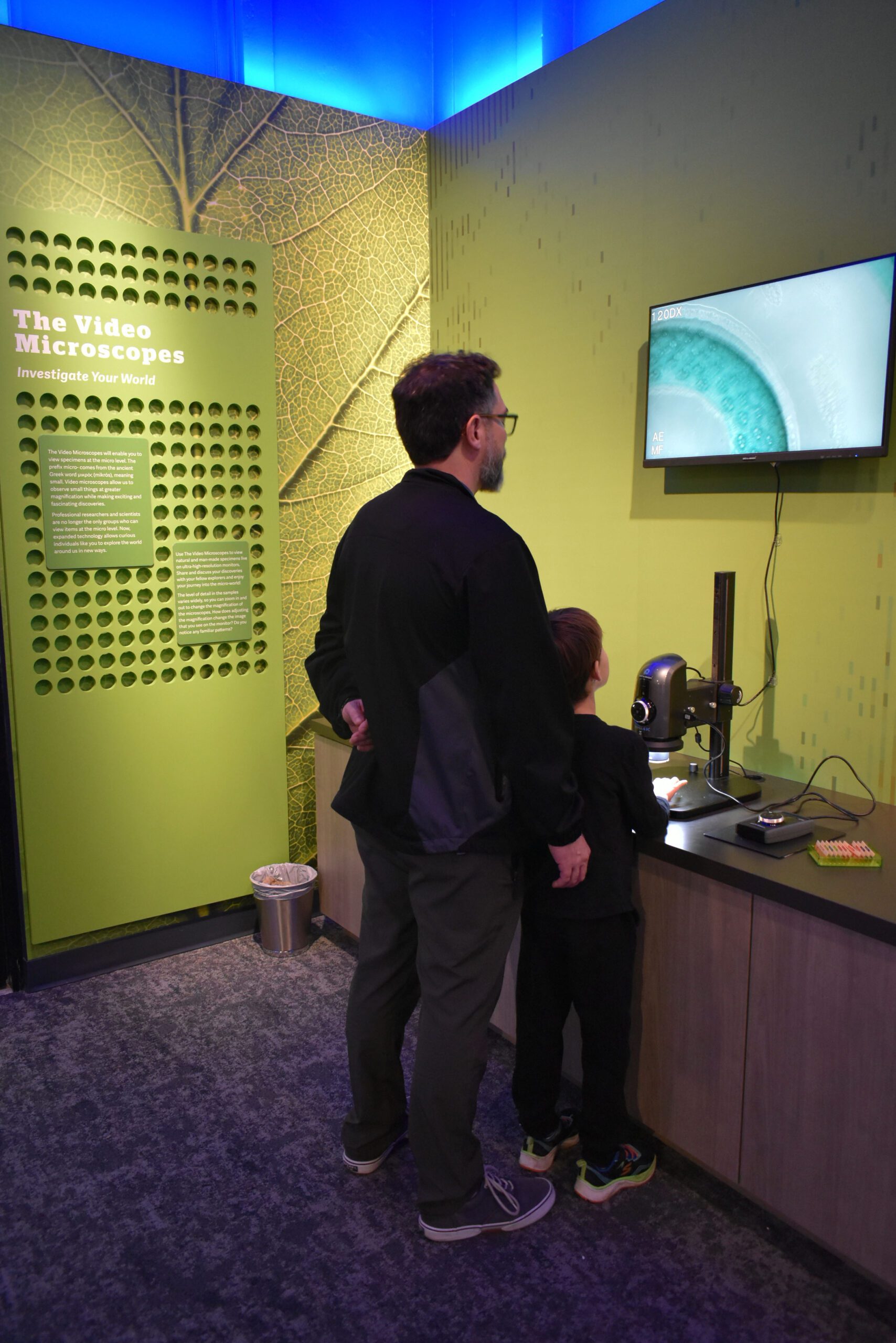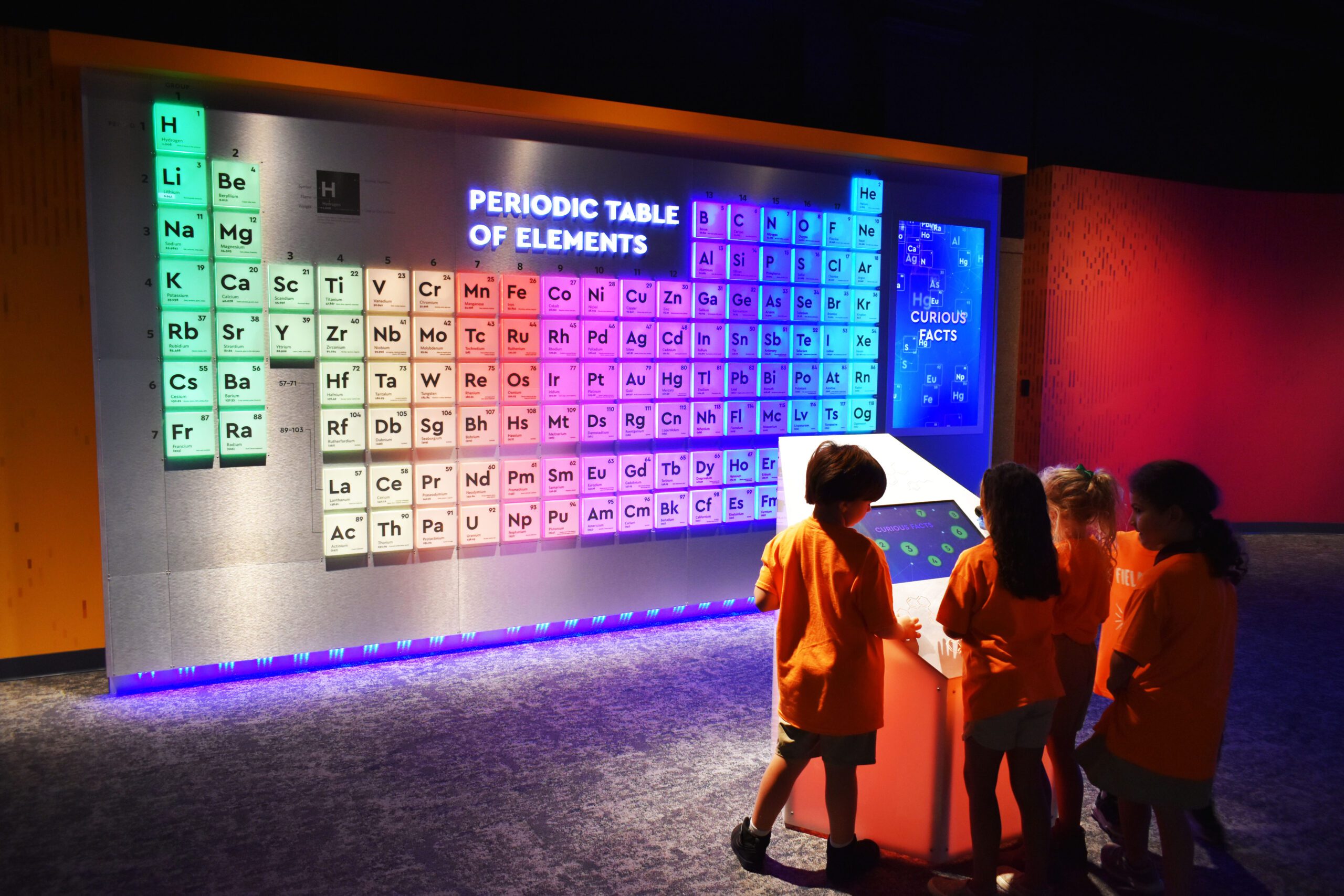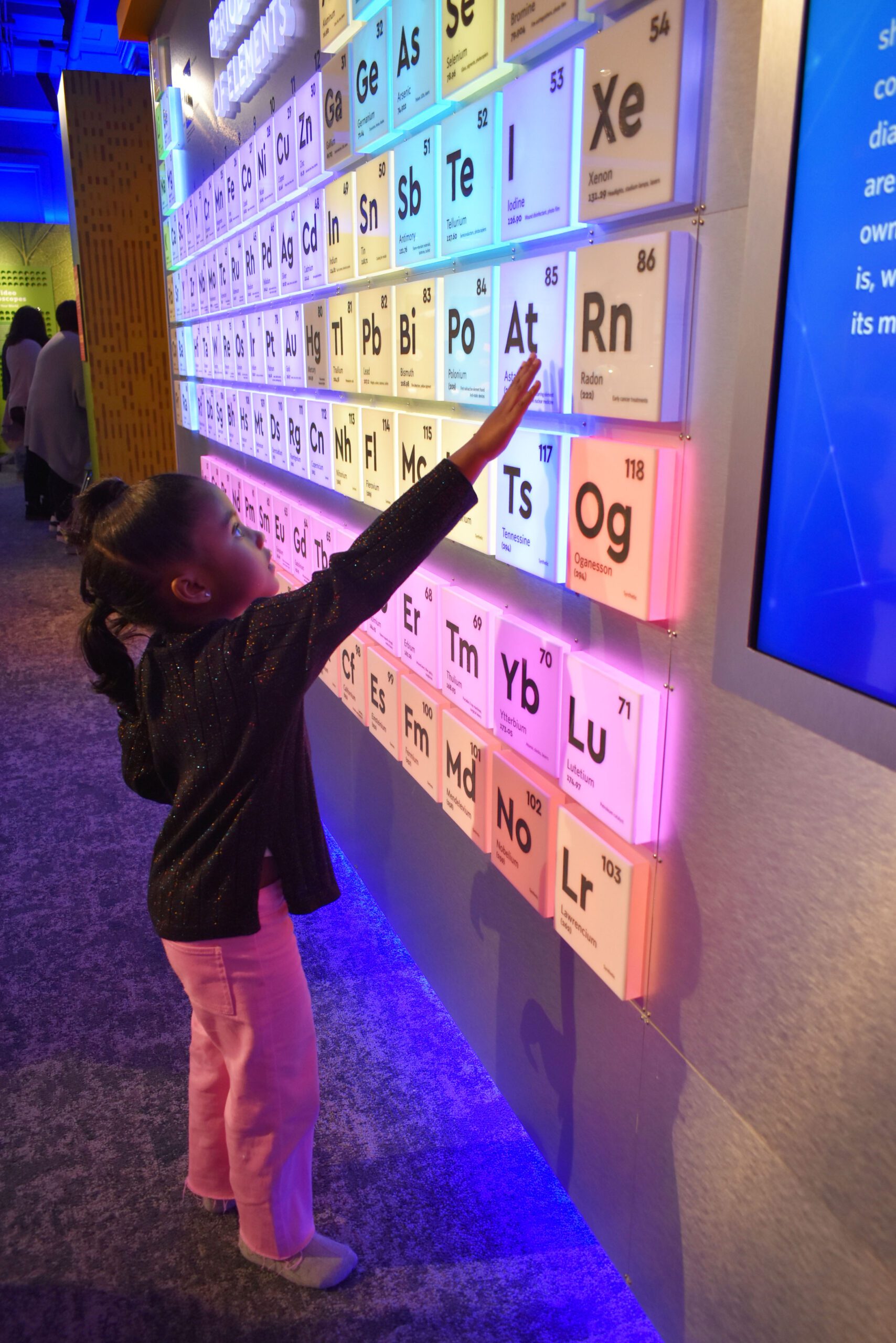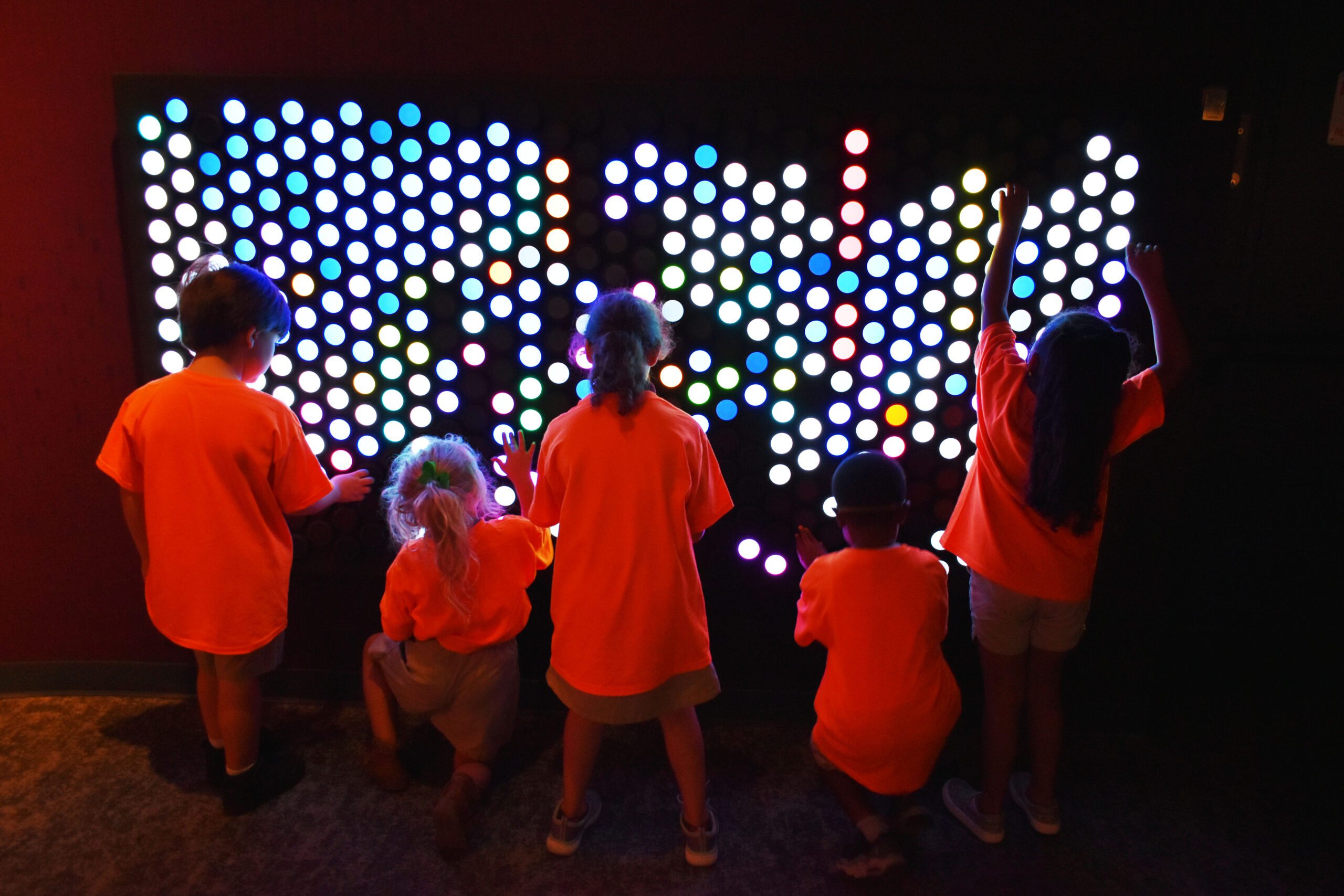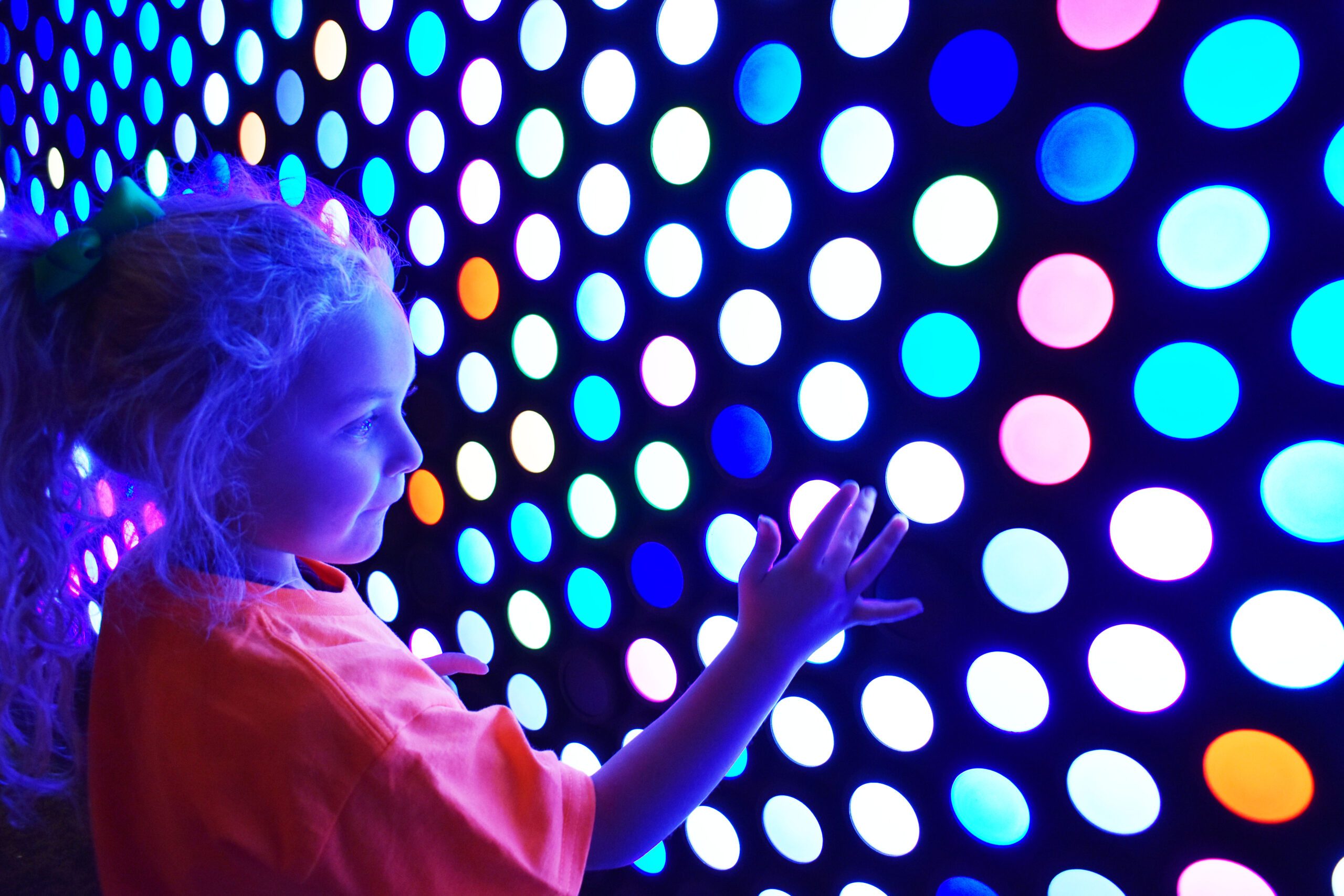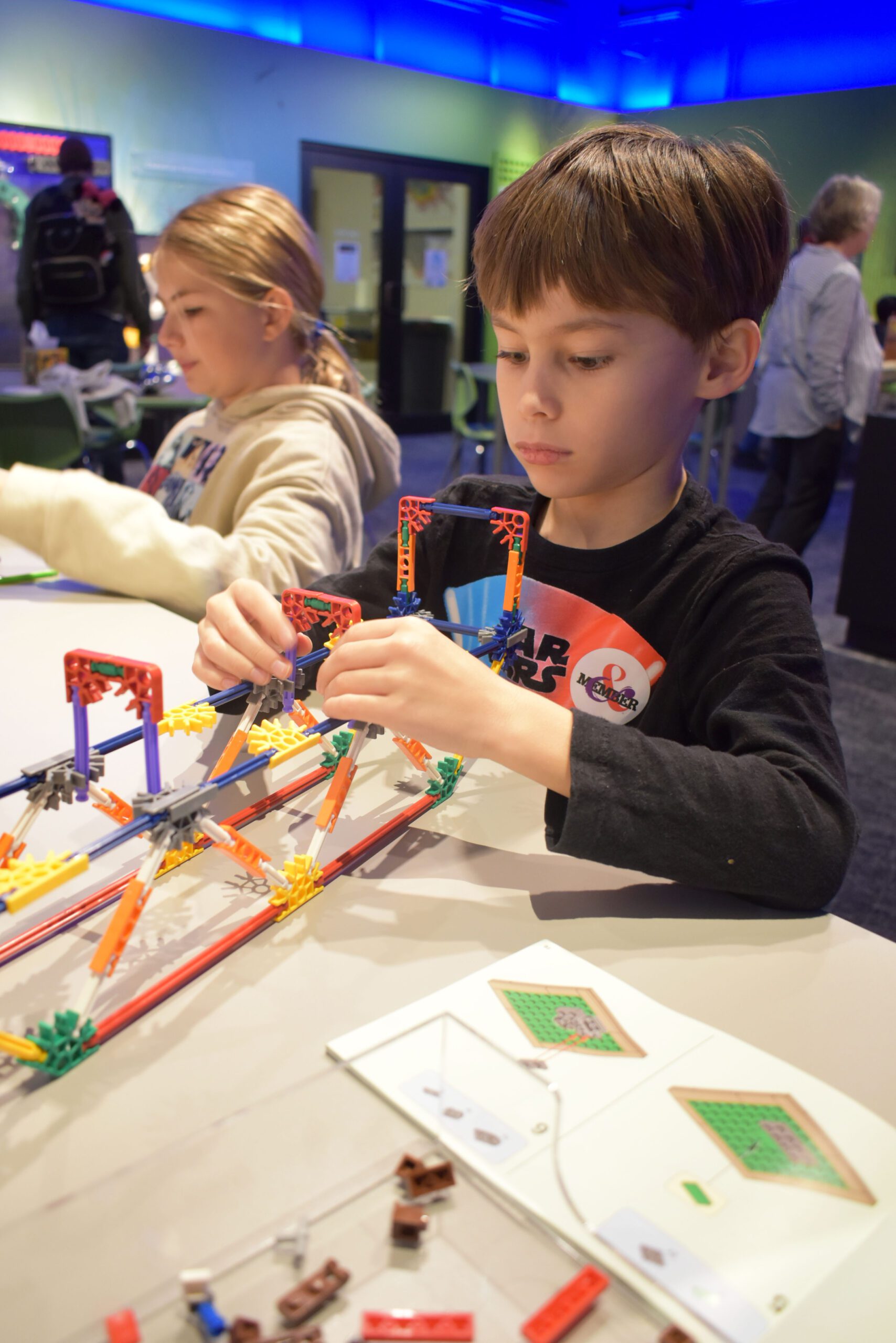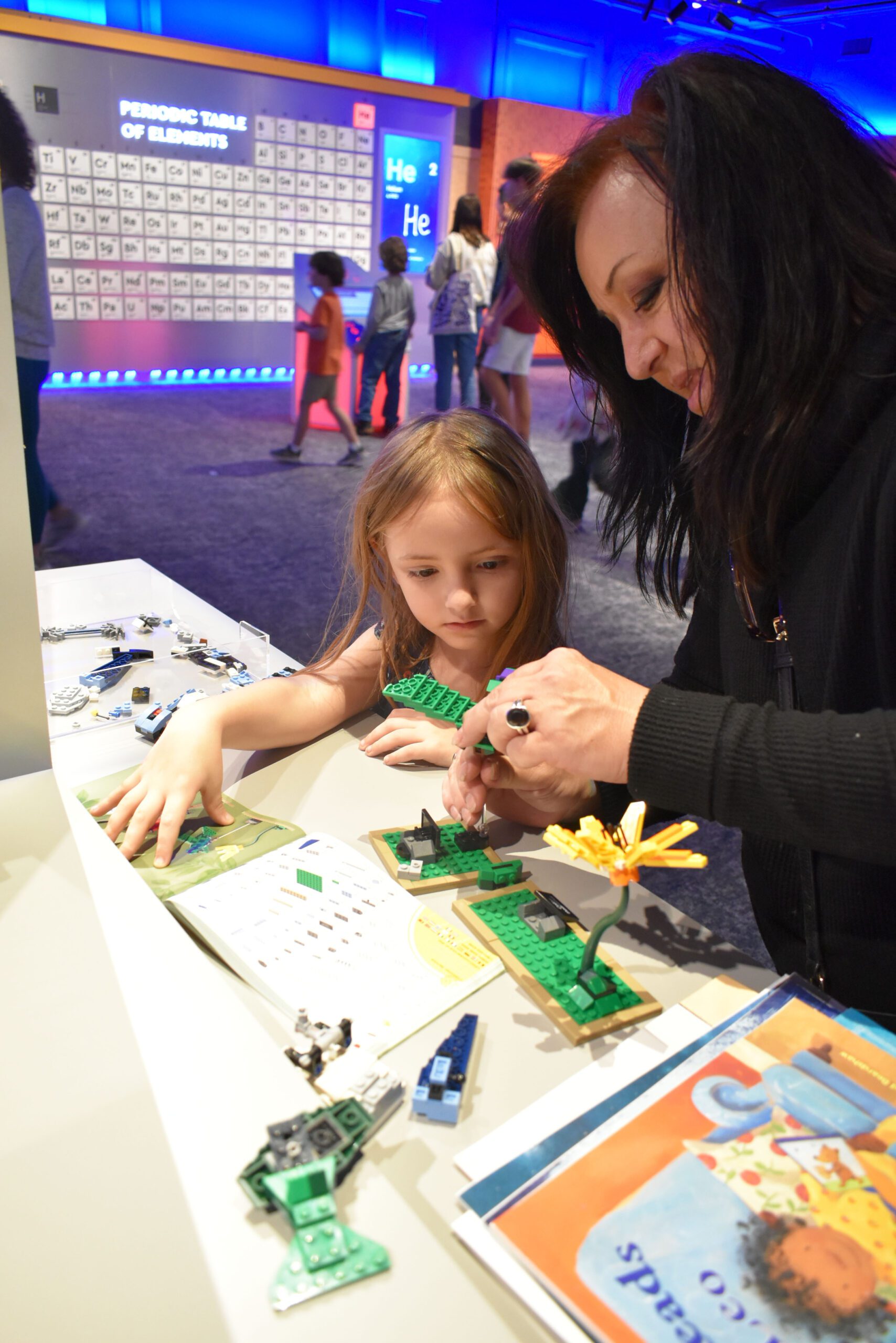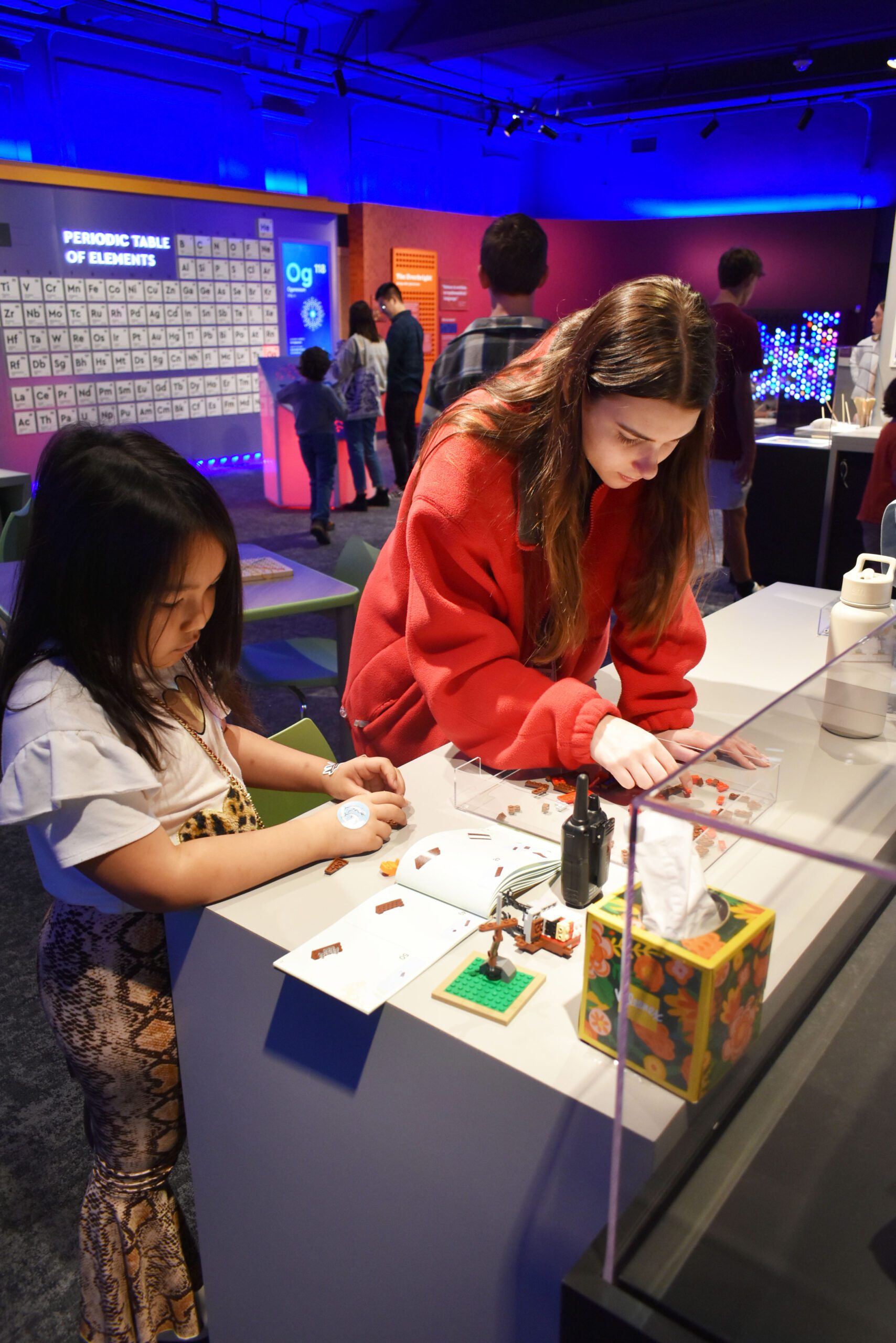The Seed
The Seed, LASM's newest hands-on gallery, is designed for aspiring artists and scientists with a heavy focus on Science, Technology, Engineering, Art, and Math (STEAM).
Each letter of STEAM is featured with an interactive exhibit that both reflects its associated discipline and connects with other disciplines.
The Rube Goldberg Ball Wall
Engineer a Solution
The Rube Goldberg Ball Wall is a special type of machine named after Rube Goldberg, a Pulitzer Prize-winning American cartoonist and inventor. His drawings, which were first published in 1928, depict devices that performed simple tasks in creative and complicated ways.
The design of this machine helps us solve the most straightforward problems in the most inventive ways possible. This process helps us to develop our problem-solving skills. How do you use machines in your daily life?
Use the 19 separate components of The Rube Goldberg Ball Wall to step into the shoes of an engineer and exercise your creativity and design skills. There are no wrong answers, and there is no way to make a mistake. It’s possible to create 524,288 different paths with these components!
- How many different routes can you design? Try a different strategy each time.
- How fast can you get the ball to travel from one side to the other? Remember, the fastest way is not always a straight line!
- What happens when you change variables in your design, like using more than one ball or changing the angle of approach?
The Video Microscopes
Investigate Your World
The Video Microscopes will enable you to view specimens at the micro level. The prefix micro- comes from the ancient Greek word (mikrós), meaning small. Video microscopes allow us to observe small things at greater magnification while making exciting and fascinating discoveries.
Professional researchers and scientists are no longer the only groups who can view items at the micro level. Now, expanded technology allows curious individuals like you to explore the world around us in new ways.
Use The Video Microscopes to view natural and man-made specimens live on ultra-high-resolution monitors. Share and discuss your discoveries with your fellow explorers, and enjoy your journey into the micro-world!
The level of detail in the samples varies widely, so you can zoom in and out to change the magnification of the microscopes. How does adjusting the magnification change the image you see on the monitor? Do you notice any familiar patterns?
The Interactive Periodic Table
Explore the Elements
The Interactive Periodic Table is not only a chart of all the known elements but also a guide to understanding their unique properties, which form the foundation of modern chemistry. Everything that you can see, touch, smell, taste, or experience results from combining these elements to create chemistry.
The periodic table of the elements was created in 1869 by Russian chemist Dmitri Mendeleev. An element is a pure substance that is made from a single type of atom. In Mendeleev’s time, scientists had not discovered many of the elements that we now know. Mendeleev predicted the characteristics of some undiscovered elements using his understanding of atomic mass. Do you think that new elements will be discovered in your lifetime?
Explore the different elements using The Interactive Periodic Table. Did you know that:
- O, N, C, H, Ca, P, K, and S combine to create the human body?
- The elements N and O form the air we breathe?
- The stars in the sky include the elements H and He?
- Your tennis shoes may be made up of the elements C, H, N, and O?
The Everbright
Design with Light & Color
The Everbright is a giant, modern re-imagining of the Lite-Bright toy that was popular in the 1960s and 1970s. The original toy used a light box, colored pegs, and black paper. Using the toy, the artist could create many different shapes and patterns with light and color.
In this modern version, there are over 158 hues representing every color of the rainbow. What happens when you turn the dial in either direction? Try using different colors to represent numbers and create simple arithmetic problems by coloring circles to represent the numbers being added or subtracted.
Use The Everbright to create innovative designs, patterns, and images with other museum visitors. Explore the field of geometry by making simple shapes like triangles, squares, and parallelograms!
More than one person can play at a time. If someone you don’t know wants to enjoy The Everbright with you, working collaboratively to create unique designs and solve problems will make the experience even more fun!
The Laser Harp
Merge Music & Math
The Laser Harp is a one-of-a-kind tool that you can use to create music inspired by mathematics. At LASM, you are always encouraged to dance to the beat of your own drum!
Did you know that mathematical patterns help organize complex musical scales and rhythms? Inspired by the Fibonacci sequence and the golden ratio, the spiral designs of this harp are a reminder of the innate connection between math and music.
Can you use The Laser Harp to re-create the melodies of songs that you know, like “Happy Birthday” or “Twinkle Twinkle Little Star”? Can you create your own melody?
Listen carefully to see if you can make a sound that you have never heard before. We hope the melodies that you invent will excite you, inspiring you to “tune in” to your unique effect on the world around you!
The Curiosity Cabinets
Discover Fascinating Objects
The Curiosity Cabinets contain artifacts, artwork, and other extraordinary treasures. Reaching the peak of their popularity in the 1800s during the Victorian Era, curiosity cabinets are an ancestor to the modern museum and were originally known as Wunderkammer, a German word meaning wonder rooms.
Some of the items in The Curiosity Cabinets are from LASM’s permanent collection, which contains over 4,000 objects that belong to our museum. Have you ever collected anything before, like rocks, coins, or cards? What do the objects in the cabinets encourage you to collect?
Consider what you see, think, and wonder as you explore each cabinet. How will these interesting objects inspire you to look more closely at the world around you and create your own artwork?
Come back and visit The Curiosity Cabinets often since the objects will change periodically. If you were building your own museum or curiosity cabinet, what kinds of items would you choose to include and why?

